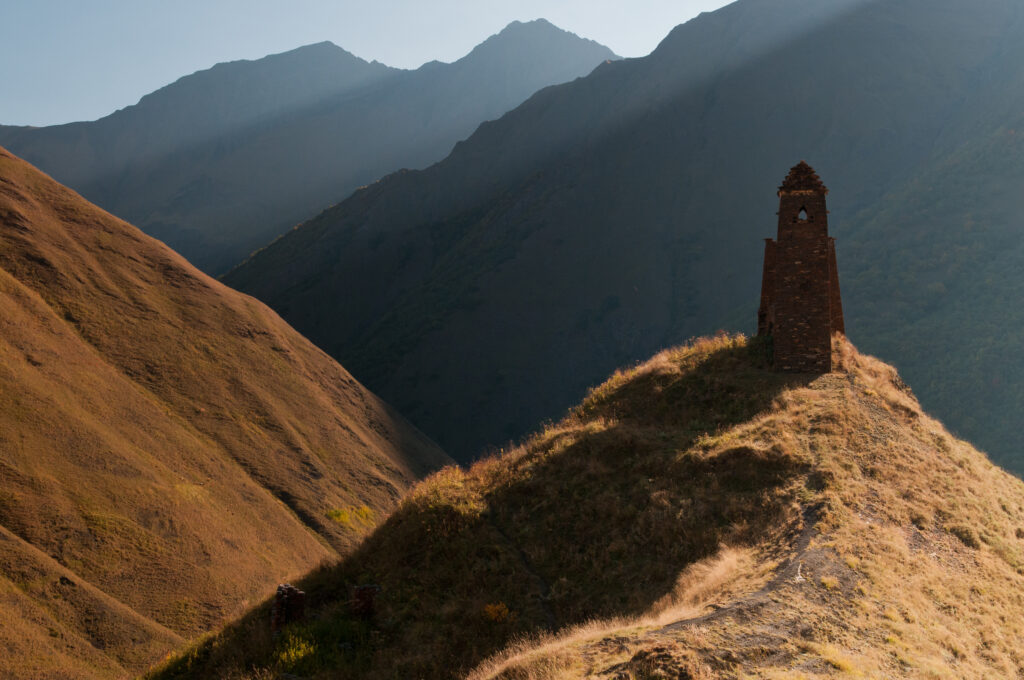The historic province of Khevsureti is like a gulp of old fashioned fresh air and one of the most beautiful and mysterious parts of Georgia. The largest villages are Barisakho and Shatili.
Khevsureti is famed for its living ancient traditions – the medieval ballads, folk music and folklore, the medieval fortress villages that guard secret valleys, and the unforgettable landscape.
Despite the sporadic invasions by the royal troops, historically, the highlander communities of Khevsureti and the neighbouring areas enjoyed a degree of autonomy from the royal authorities. Considered Georgia’s best warriors, they defended the borders and provided crack troops for the royal guards.
Their well-preserved ancient traditions are a mix of Christian, Muslim, spiritualist, and pagan beliefs. The Khevsur men dressed in chain mail, armed with broadswords and wore garments decorated with crosses. They considered themselves members of the army of the sacred flags and guards of Georgian kings and had a strict system of physical training in martial arts – that can still be seen in performances today as the warrior dance, Khevsuruli.
Marooned in the mountains of the High Caucasus, Khevsureti borders Chechnya and is included in the present day Mtskheta-Mtianeti region.
It is a land of narrow mountain passes, remote valleys, emerald mountainsides emblazoned with wild mountain flowers and glacial rivers. In winter, snow makes many of the valleys inaccessible.
The Chaukhi massive is on the border of the Khevsureti region and is one of the most popular climbing and hiking areas in Georgia. Fit walkers must make the effort to get to the Abudelauri lakes. It’s a challenging hike along narrow rocky paths to reach these three lakes, one blue, one green, one white, and well worth the effort.
Dozens of fortifications, sanctuaries and churches are scattered across the province. The mountains are rich in slate, and these stone buildings blend naturally into the mountains. Chief of these are the Khakhmati fortress, Akhieli fortress, Lebaiskari fortress, Mutso fortress, Shatili fortifications, Gudani Cross, and the Anatori Cross.
The village of Shatili has over 50 defensive koshkebi (towers) clinging together on a rocky outcrop. Built between the 7th and 13th centuries, it was abandoned between the 1960s and ‘80s.
The ruined fortress village of Mutso is straight out of a fantasy movie. Located on rocky hill at 1880 m above sea level, it is a warren of about thirty towers and bone-laden stone crypts.
At Korsha, 2km past the village of Barisakho, there’s a small but interesting museum of Khevsur life, with armor, weapons, traditional clothing and photos and well worth a stop.
